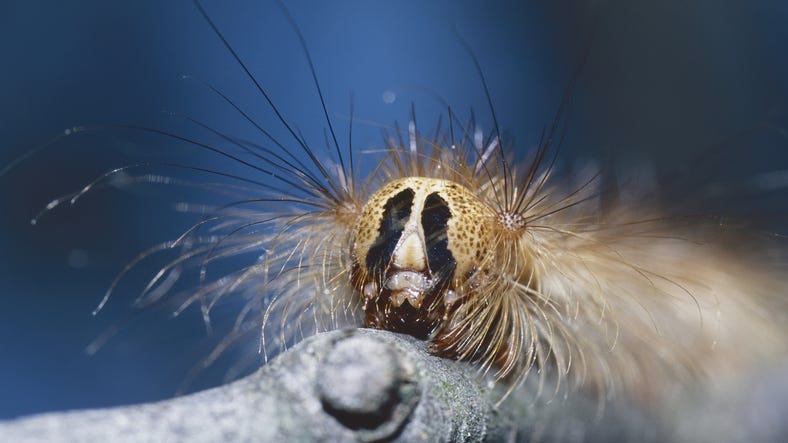
(WWJ) As spring is here and flowers and trees are budding, the U.S. Department of Agriculture is reminding Michiganders to keep an eye out for harmful, invasive pests.
WWJ's Beth Fisher spoke with Kathryn Bronsky, policy manager for the USDA's Animal and Plant Health Inspection Service, who said these hungry pets may be in your own backyard.
"There are several plant pests to be on the lookout for. One is the box tree moth," Bronsky said. "This attacks boxwood plants it's a common ornamental. And what you want to be on the lookout for are the caterpillars. They eat the leaves of these plants and if left untreated, untouched, they can and devour the entire plant. So look for caterpillars and the webbing that they make."
"You could also report any signs of box tree moth to your local agricultural official," she said. [See photos of the box tree moth, box tree moth caterpillars their webbing at this link.]
Another invasive pest to look out for in Michigan this spring is the spongy month, formerly known as the gypsy moth.
"This is a moth that attacks 300 species of trees and shrubs and it can be commonly moved through egg masses this time of year," Bronsky said.
"They're little kind of cotton bumps that are easy to identify and scrape off. So you wanna look out for those and leave them behind to make sure not to move them to new places." [See photos of the spongy month, and what to look for in your yard at this link].
"Another method is to make sure it never moves untreated firewood, for example, on camping trips," she urged. "Instead, you should buy heat-treated, certified wood or responsibly gather firewood near the place that you will burn it so that you're not transporting these invasive pests in new areas."
Bronsky said the box tree moth and spongy month are both under federal quarantine in Michigan.
Two more invasive pests of continued concern, she said, are the emerald ash borer and the spotted lanternfly, which could also harm trees and natural resources in Michigan.
"So also be on the lookout for anything that looks like it it's yellowing leaves or is kind of being damaged by something," Bronsky said.
The public is urged to visit Hungrypests.com and go to the state tracker on Michigan to report any signs of these invasive pests to the state plant health director.
